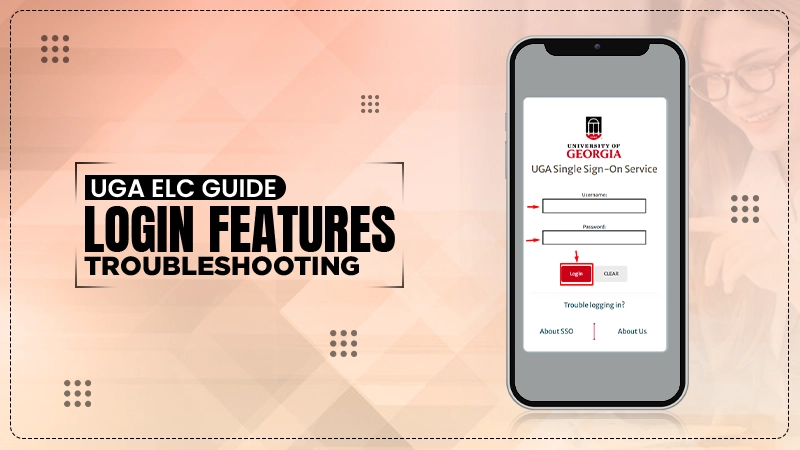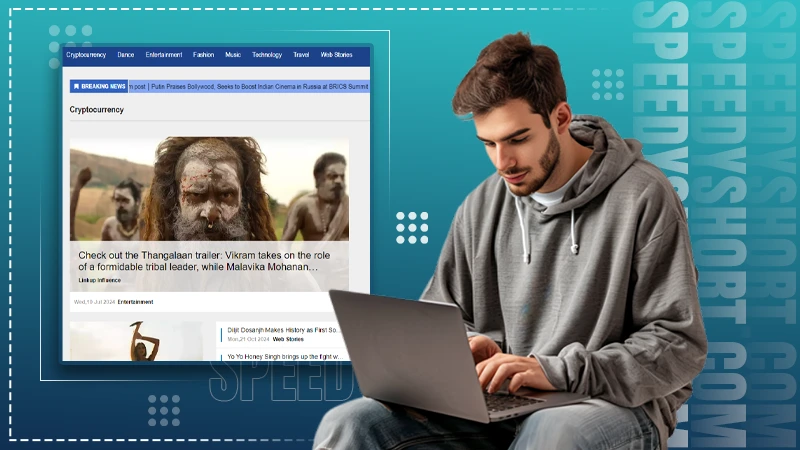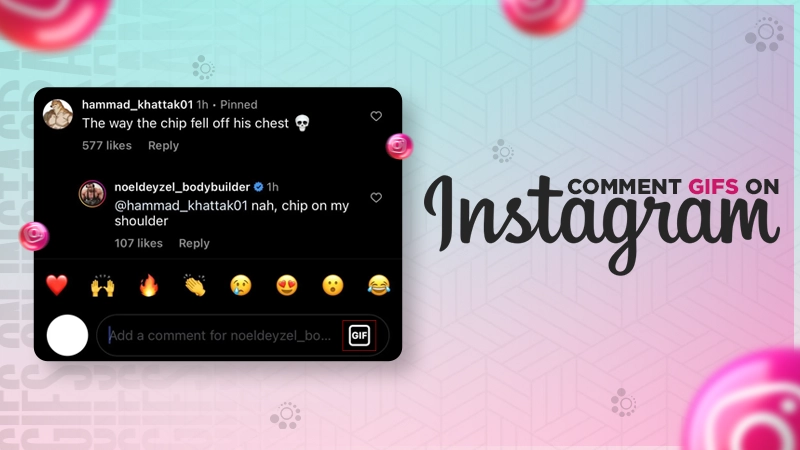Measuring Success: What Are Impressions On LinkedIn and Its Role in Growing Your Professional Network?
Are you trying to leave a lasting impression in the realm of professional networking? If so, then closely pay attention to the LinkedIn impressions!
When talking about today, LinkedIn has become the go-to platform for professionals and businesses alike. With over 740 million users worldwide, it is not only a powerful tool for job seekers but also for building connections, generating leads, and establishing thought leadership.
But what exactly are LinkedIn impressions? In simple terms, they refer to the number of times the profile or content has been seen by other users. Meaning that the moment someone lands on your profile and engages with the content available, it counts as an impression.
High impression numbers not only reflect on you as a brand but also on your company’s brand. So, without further ado let’s get into it more deeply and explore what it is, its types, benefits, and more.
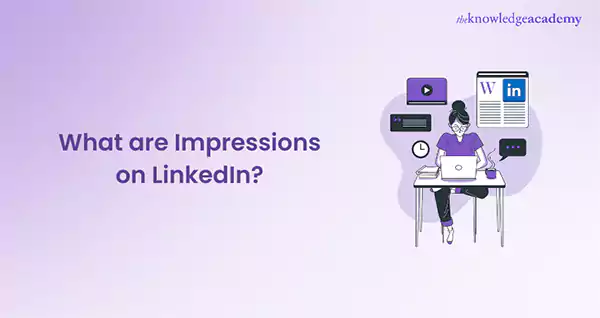
Get to Know Impressions: What Does Impressions Mean On LinkedIn and its Importance
As said earlier, impressions on LinkedIn are a key metric that gives insight into the visibility of the content on the platform. Impressions refer to the number of times your post or profile has been displayed on someone’s screen.
If you are aware of how Instagram wrapped feature works, then you may understand what is an impression on LinkedIn easily and how it works.
Closely understanding them gauge the reach and impact of posts. Tracking them enables individuals, brands, or organizations to measure the effectiveness of their content strategy and make data-driven decisions to optimize future posts.
Why is it Imperative to Monitor LinkedIn Impressions?
First and foremost, tracking impressions on LinkedIn gives an idea of how the content is performing and is it perfectly resonates with the audience or not.
Let’s understand with an illustration:
Suppose you are running a marketing campaign on LinkedIn or any other channel and for that, you have to set or track KPIs to assess the progress and measure success.
In such a situation, with impressions, you can get all the metrics to track how many times the content gets seen.
This is suggested because without knowing what is working best, you can’t put other data, like engagement rate, into perspective.
On the contrary, if there is potential for downfall, or you see a decline in LinkedIn impressions, you can take action earlier without wasting time and work for a better future ahead.
Different Impression Types
LinkedIn Impressions refer to the number of times a piece of content, such as a post or ad, is viewed by a unique individual.
There are three types of unique impressions on LinkedIn: organic impressions, paid impressions, and viral impressions. Each type has its own meaning and method of measurement.
Let’s discuss each of them separately:
Organic Impressions
Organic impressions LinkedIn refers to the number of times a piece of content is viewed by users organically, without any paid promotion or advertising. These occur based on factors like relevance, engagement, and connections.
These can include posts from personal accounts or from company pages that are shared by other users.
| Benefits | Limitations |
| They are perceived as more authentic and trustworthy by users. | Organic impressions require time, effort, and consistency. |
| They reflect genuine interest from the audience, which can enhance credibility and reputation on the platform. | These are the whims of LinkedIn’s algorithm and determines the visibility of content. |
| Organic impressions are achieved without making use of advertising dollars. | It has limited control over audience segmentation. |
| Continuity in content creation and active participation fosters long-term sustainability on LinkedIn | |
| It facilitates the organic growth of your professional network and community. |
Paid Impressions
As the name suggests, paid impressions refer to the number of times the content is displayed as a result of paid advertising campaigns or sponsored content promotions. These can include sponsored posts, sponsored InMail, and display ads.
| Benefits | Limitations |
| It is advantageous in reaching a broader audience beyond your organic network. | The operation of sponsored marketing campaigns calls for financial investment. |
| You can get target-specific demographics, industries, job titles, and interests. | It runs the risk of audience fatigue and ad saturation. |
| Paid impressions offer immediate visibility and results. | Such impressions face the challenge of reaching audiences who actively block or ignore advertising content. |
| Paid ones open up advanced targeting options. This enables users to tailor the content to specific audience segments. | Achieving visibility and engagement can be challenging in saturated markets or highly competitive industries. |
| It provides robust analytics and tracking tools. With them, businesses or individuals can measure the return on investment (ROI) of advertising campaigns accurately. |
Viral Impressions
Viral impressions are the number of times the content is displayed as a result of being shared by others within the platform. When the post gains traction and is shared beyond the immediate network, it also shows the potential for the content to go viral and reach a larger audience beyond their own connections or followers.
| Benefits | Limitations |
| It amplifies the reach and exposes it to a larger audience than the organic network. | It also entails losing control over how the content is perceived and shared. |
| When posts resonate with a broader audience, it garners likes, comments, and shares. Ultimately, it fosters community engagement and relationship-building. | Viral impressions are susceptible to scrutiny and criticism, meaning there is potential for backlash. |
| It transcends the boundaries of the immediate network, reaching those who may not have discovered your profile or posts otherwise. |
LinkedIn Impressions Measurement
Measuring impressions is relatively straightforward. On one hand, LinkedIn analytics is a powerful tool that allows you to track and measure the success of the content.
Whereas, there are third-party tools available that can help enhance analytics capabilities and provide in-depth data analysis for even better results.
LinkedIn Analytics
It is one of the most powerful tools that provides users with valuable insights and metrics on impressions. To access it, you must have a LinkedIn account and a company page (if applicable).
Follow these steps to see how to obtain them:
- Once logged in, click on the “Profile” icon in the top right corner of your homepage.

- Select “View All Analytics” from the drop-down menu.
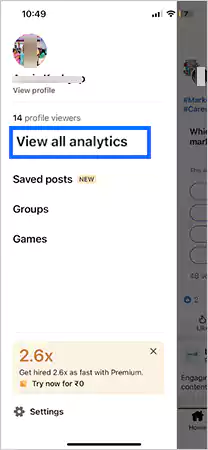
- On the directed page, you can see an option for post impressions. Click on it, adjust the filters, and know what you want.
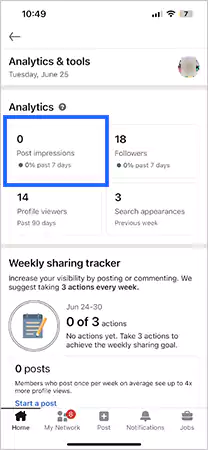
Third-Party Tools
Besides LinkedIn Analytics tools, there are some other popular third-party tools for measuring impressions on LinkedIn. For example, Hootsuite, Buffer, and Sprout Social are some of its examples.
These tools come with features like trend analysis, audience segmentation, and competitive benchmarking. These allow you to schedule and publish posts, track engagement metrics, and monitor the overall presence.
Maximize Impressions on LinkedIn With 5 Tricks
Maximizing impressions requires a few efforts that include the following:
- Compelling Content: It includes high-quality and relevant content that efficiently addresses the interests and needs of the target audience. On top of that, adding industry insights, offering tips, or sharing personal stories, captures the audience’s attention and drives engagement.
- Consistency of Posts: Staying active increases the likelihood of an increase in connections and followers. It even signals to the LinkedIn algorithm that you are an engaged user.
- Use of Relevant Hashtags: Hashtags play a major part as they increase the discoverability of content and expand its reach. You can use industry-specific hashtags and post about trending topics.
- Join Groups and Communities: Being a part of groups and communities, expense network. To get into one of them, you can engage in group discussions, share insights, and offer support to increase visibility and establish credibility within the community.
- Consider Paid Promotions: The fact that organic reach is valuable, but paid promotions can provide that additional boost to your profile and reach out to a broader audience.
Conclusion
As we end the exploration of what do impressions mean on LinkedIn, you may have an idea of what impressions are and why they matter. We are sure, you are now capable of using them Strategically.
As a result, it favors you in enhancing visibility, expanding reach, and ultimately connecting with more professionals in the industry.
In the hustle of keeping up with the competition, do not forget to track your impressions regularly, analyze the data provided by LinkedIn Analytics, and implement strategies to maximize your exposure.




